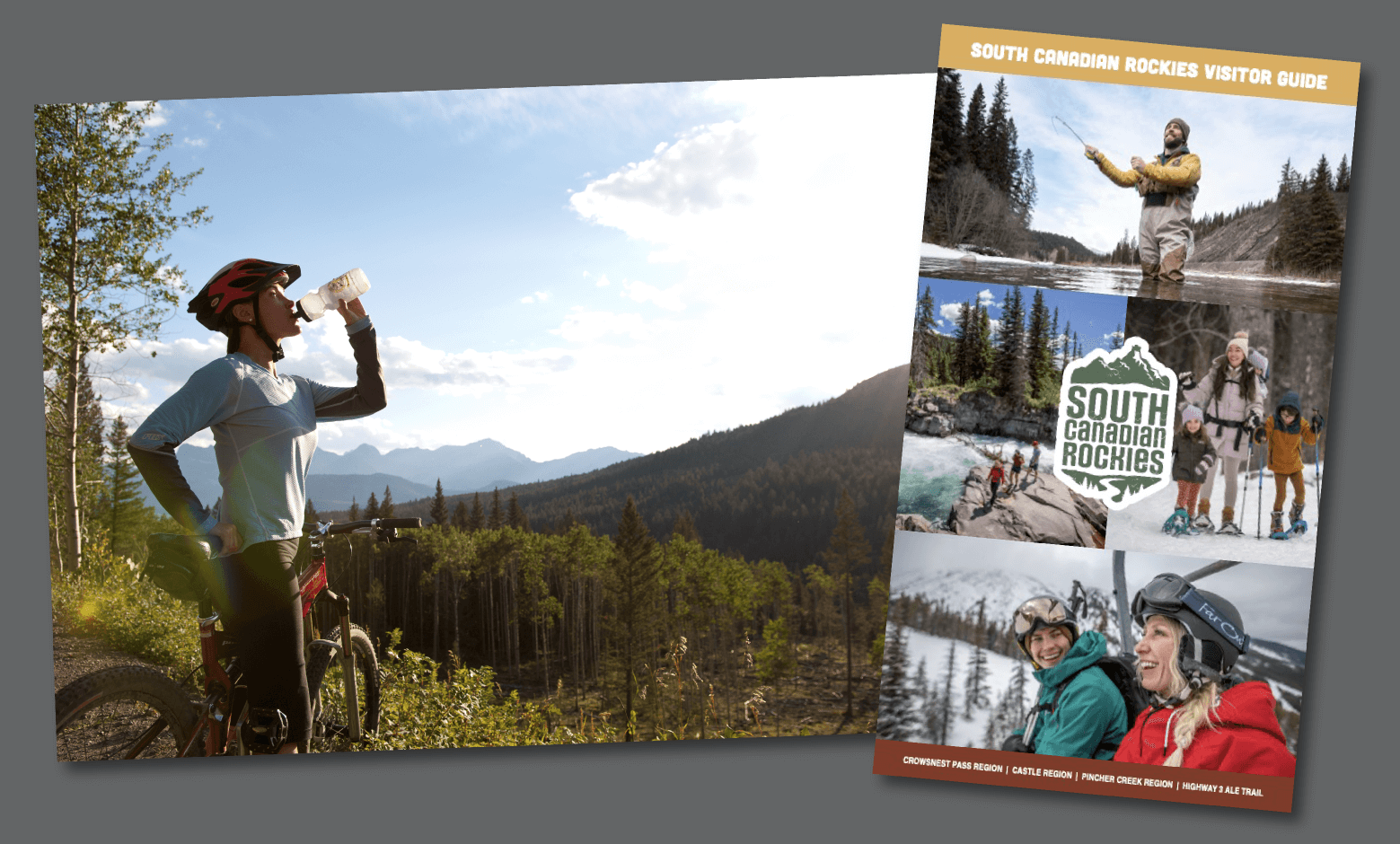The South Canadian Rockies offers ample opportunities for fishing enthusiasts. Use this itinerary to scout out a thrilling two-day adventure in the heart of Castle Provincial Park.
Pre-trip
Check out your fly box before heading out to get organized and make any necessary additions. Make sure you have spare leaders, tippet, floatant, rods and reels, forceps, nippers, landing net, rain gear, camping gear, food, polarized glasses, water and firewood.
You’ll have limited access to cell service, so now would be the time to get your fishing licence and check the water-specific regulations. One thing to note is that fishing is not allowed within the boundaries of the West Castle Wetlands Eco Reserve near the ski resort.
Make sure to not only have bear spray, but double check that it hasn’t expired (normally they last four to five years). It’s also always a good idea to share your trip plan with somebody staying at home, giving them a rough idea of where you plan to camp and fish.
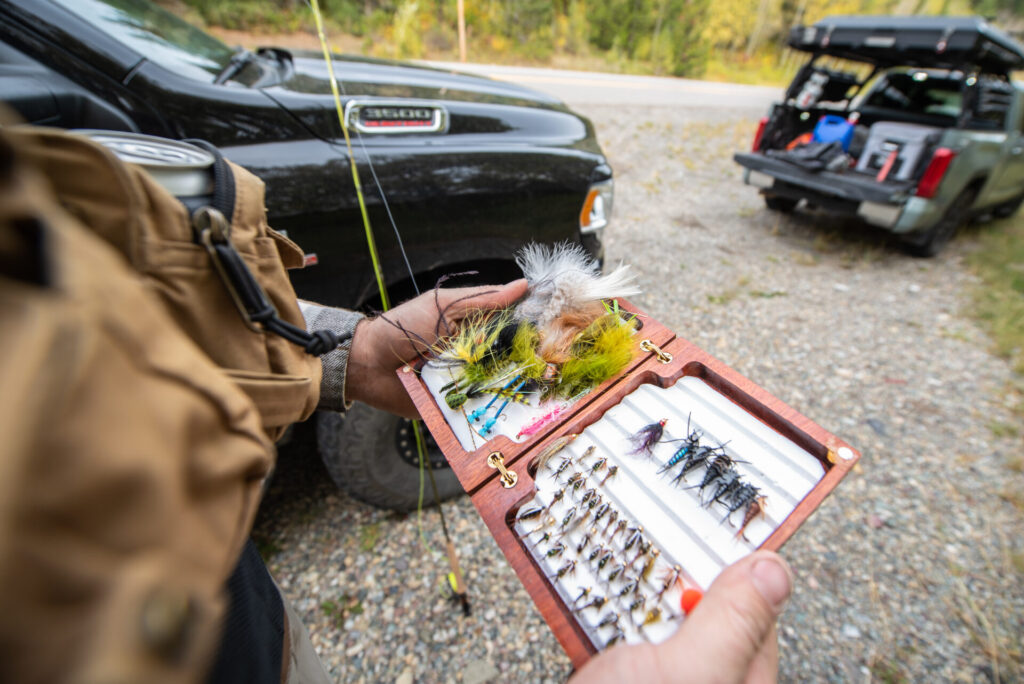
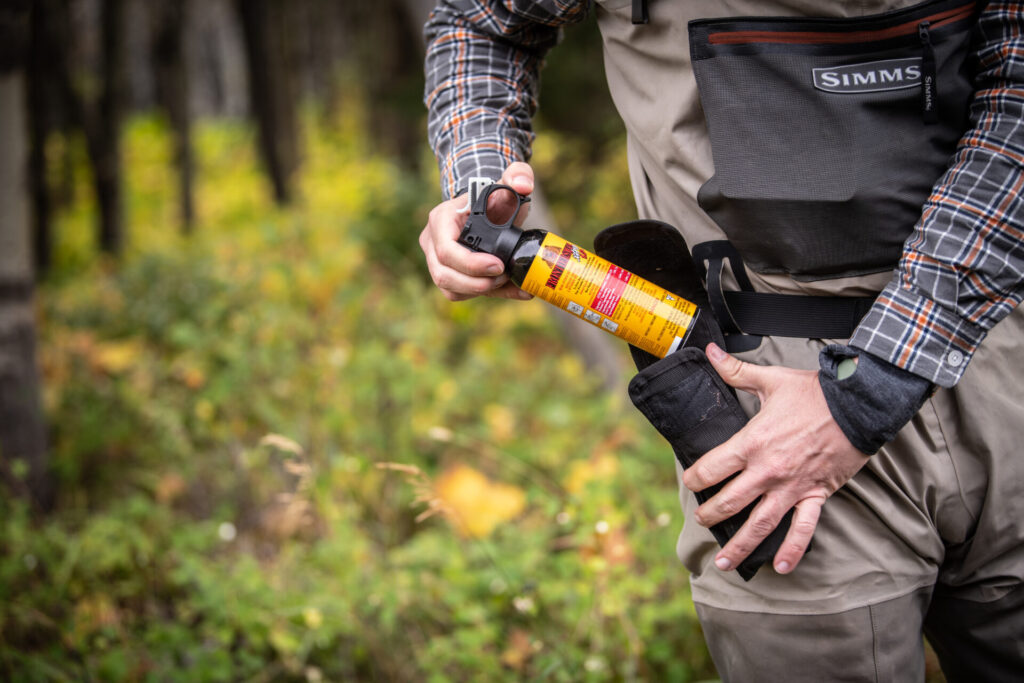
Day One
If you’re departing from Calgary mid-morning, you’ll get to the Castle area with enough time to scout your campsite. Even with the long summer days, it’s a good idea to have your tent staked just in case you get into some fish later in the day and don’t want to leave the water just as it’s turning on.
Castle Provincial Park has designated camping areas with a flat rate of $20/night, and are first-come-first-serve between May 1st and November 30th. Look out for the information kiosks in the park, where you can purchase your camping pass.
If you like something a little more rustic like I do, check out the closest public land use zone (Livingston PLUZ). You can download the PLUZ map from the Alberta government website and open it with the Avenza app to scope out a good spot. While one person sets up the tent, the other can fire up some burgers on the grill. It’s nice to have a warm meal before hiking up a cold creek, especially if you’re wet wading.
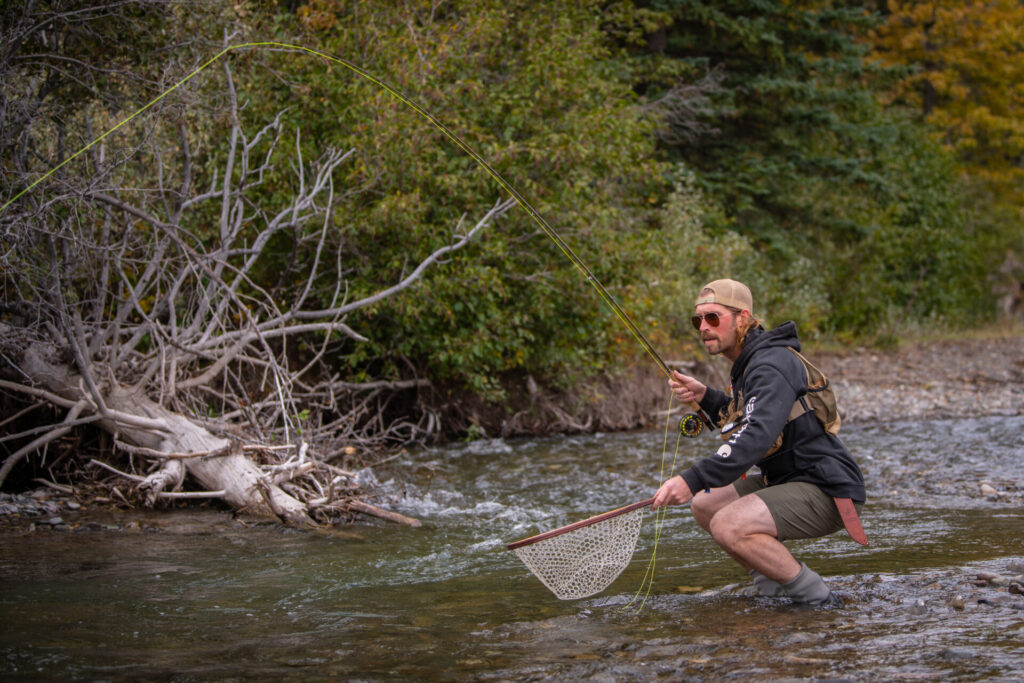
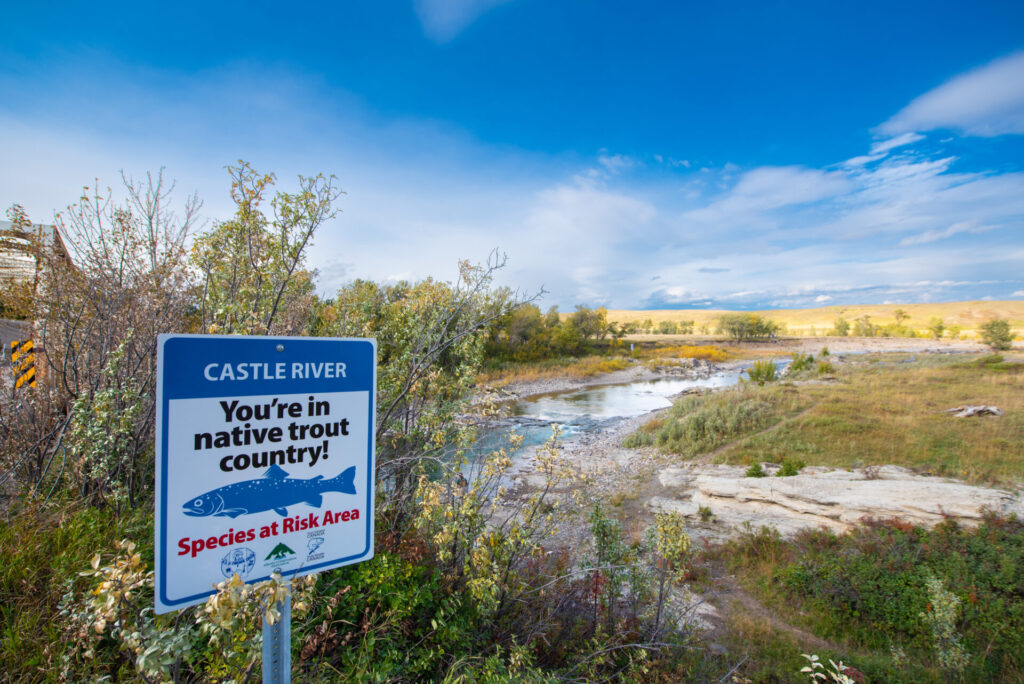
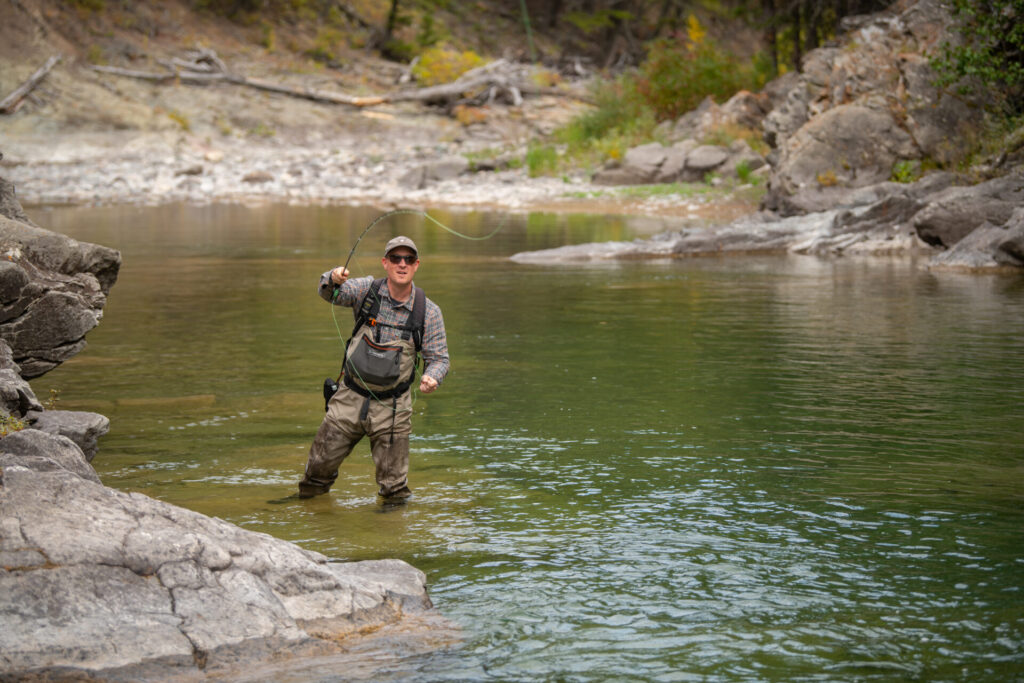
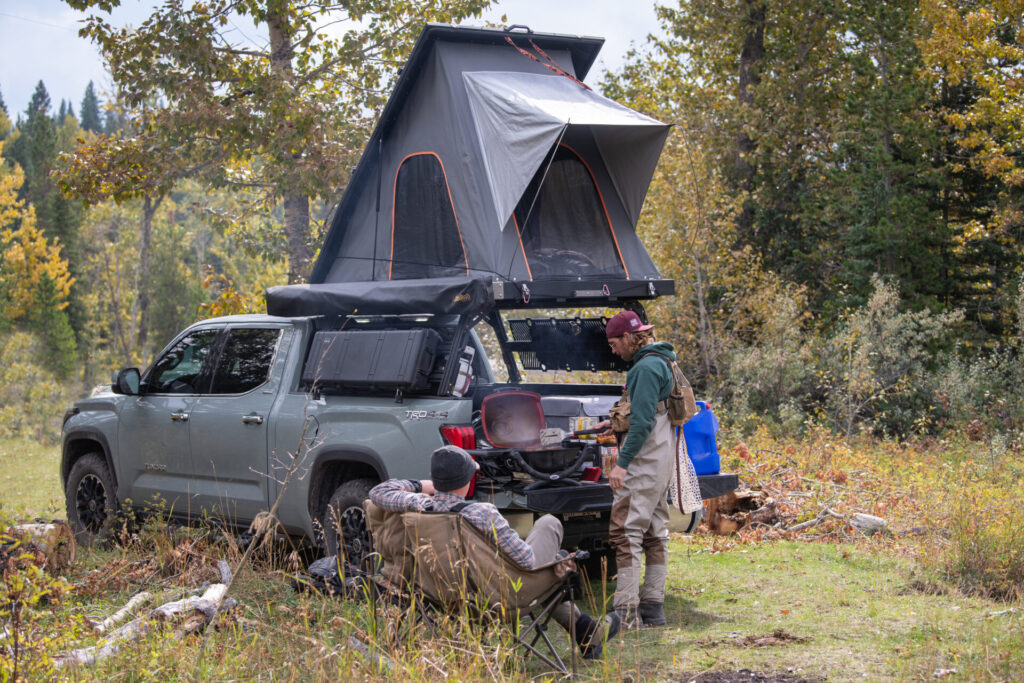
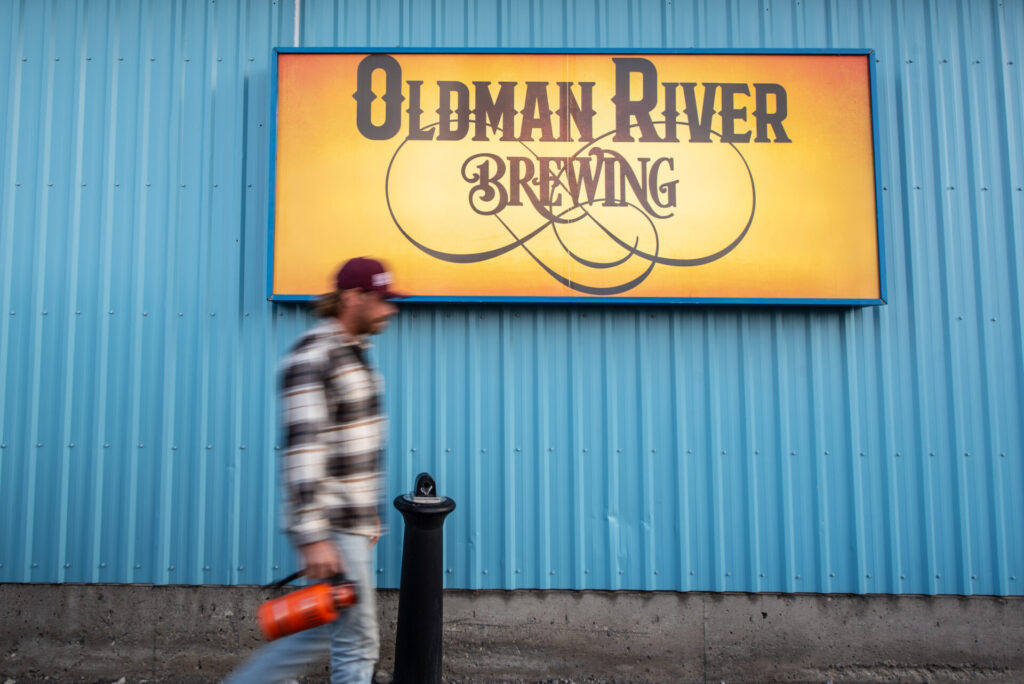
Pull out a hard copy of the Backroad Mapbook to dial in the best access points on the river. There are a bunch of spots where the road crosses the Castle, or bumps up close to it – bridges are one the best places to gain entry to the water. You can also go high-tech and use GPS maps and apps like Avenza, BRMB, and Gaia.
Arriving at your first spot, you’ll have to decide if it’s warm enough to wet-wade, or pull out the waders and gear up. Anything 22-24 degrees and above is usually comfortable, but if it’s been a cold night, you might prefer more insulation and opt for some breathable waders. With the size of the Castle system, expect to do some walking. If you’re anything like me and have a serious case of ‘next-bend-itis,’ you’ll be covering some ground. The rivers and creeks are usually crossable depending on the section you choose.
After hopping from spot to spot, finding some fish and losing some flies, it’s a good time to hit up Oldman River Brewing for some fresh local beer and delicious food. You might even luck out with some live music or, as in our case, bingo night. Head back to the campsite with time for a crackling fire and short stories about big fish, however accurate they might be.
Day Two
Wake up, fire up the stove for a hearty breakfast and warm up by the campfire before the second day of your adventure.
Pack up the tent gear, fully douse the fire with water from the creek, and make a plan for where to fish based on how it went on day one. It’s a great opportunity to revisit the ones that got away or challenge yourself to tackle the unknowns of new water.
Having spotted a few likely-looking tributaries (Lynx, Carbondale, Lost Creek, Gardiner, Beaver Mines, Mill Creek, Screwdriver, etc.), take your pick and start where they’re crossed by one of the many well maintained roads in the area. Being smaller bodies of water, you can cover two to three of these pretty easily in a day.
Find a spot mid-afternoon to grab a quick bite of food. Some beef jerky, a handful of trail mix, and a sandwich is a quick and filling lunch to get you back on the water. Time for one last spot before turning the truck north and heading back to the city. I usually like to head back to the city with some daylight on the road, but when the bite is on it can be hard to pry yourself away. One. Last. Cast…
Keep your eyes peeled on the drive home – fall, and dusk mean the deer and possibly elk will be ones to look out for. You might even be lucky enough to spot one of the majestic moose that call this area home.
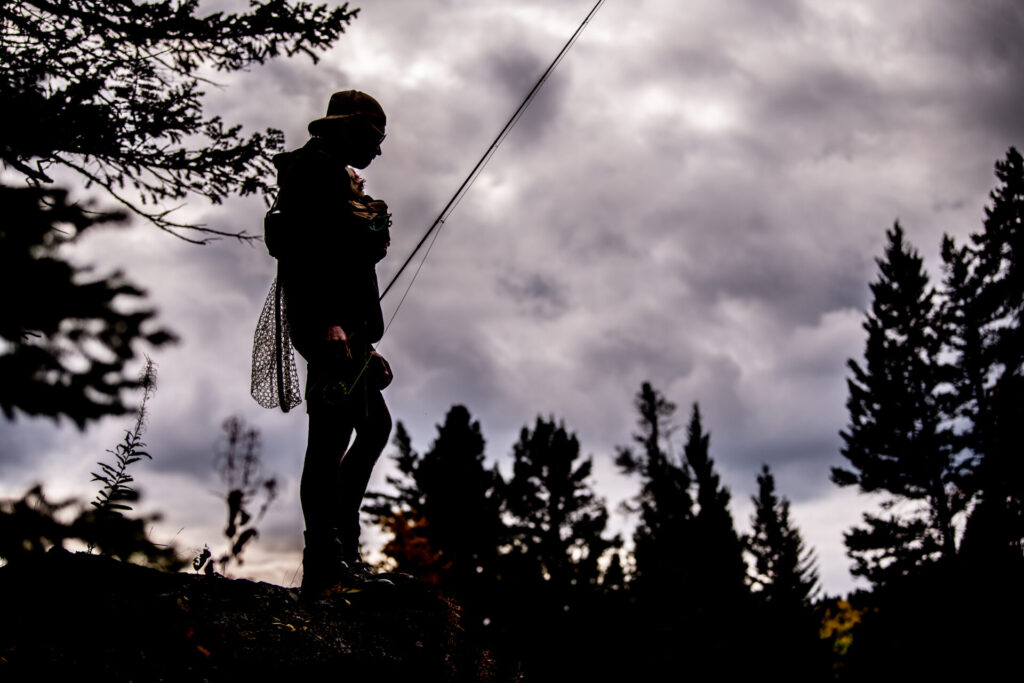
Story by Mark Shannon, Local Photographer & Fishing Enthusiast. 2023

